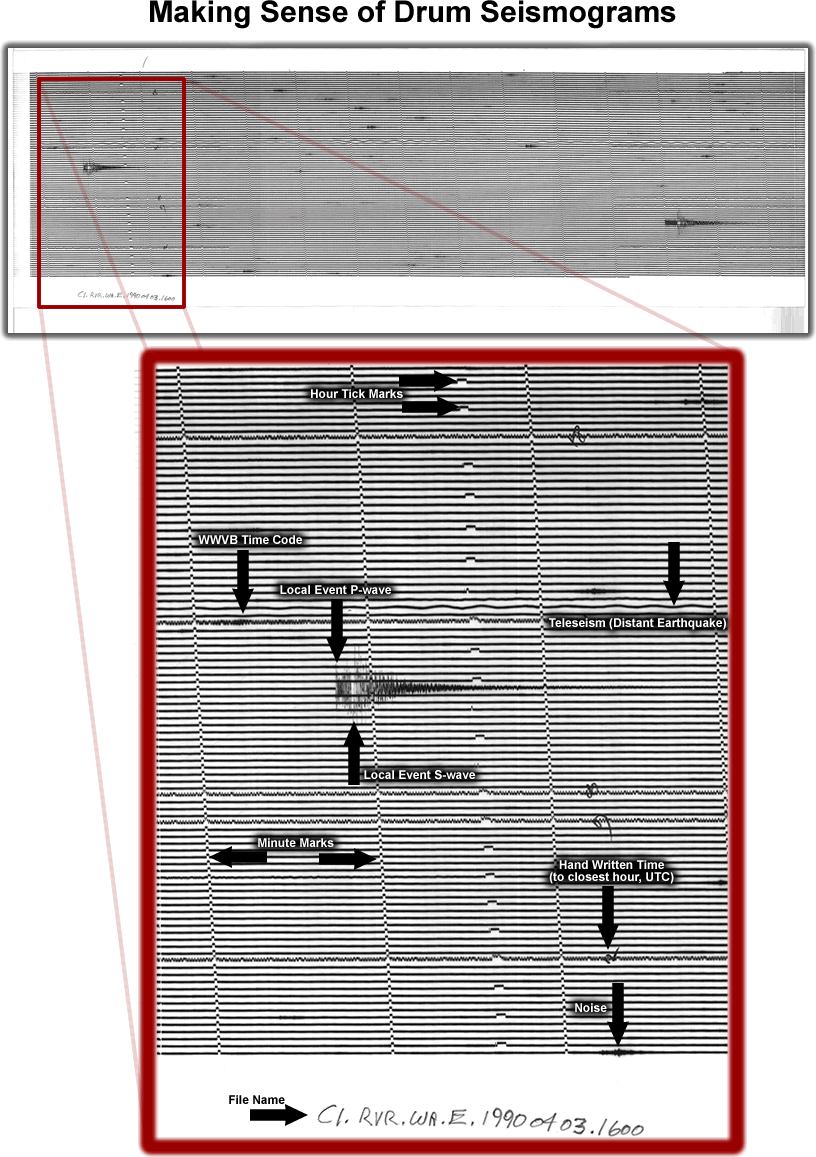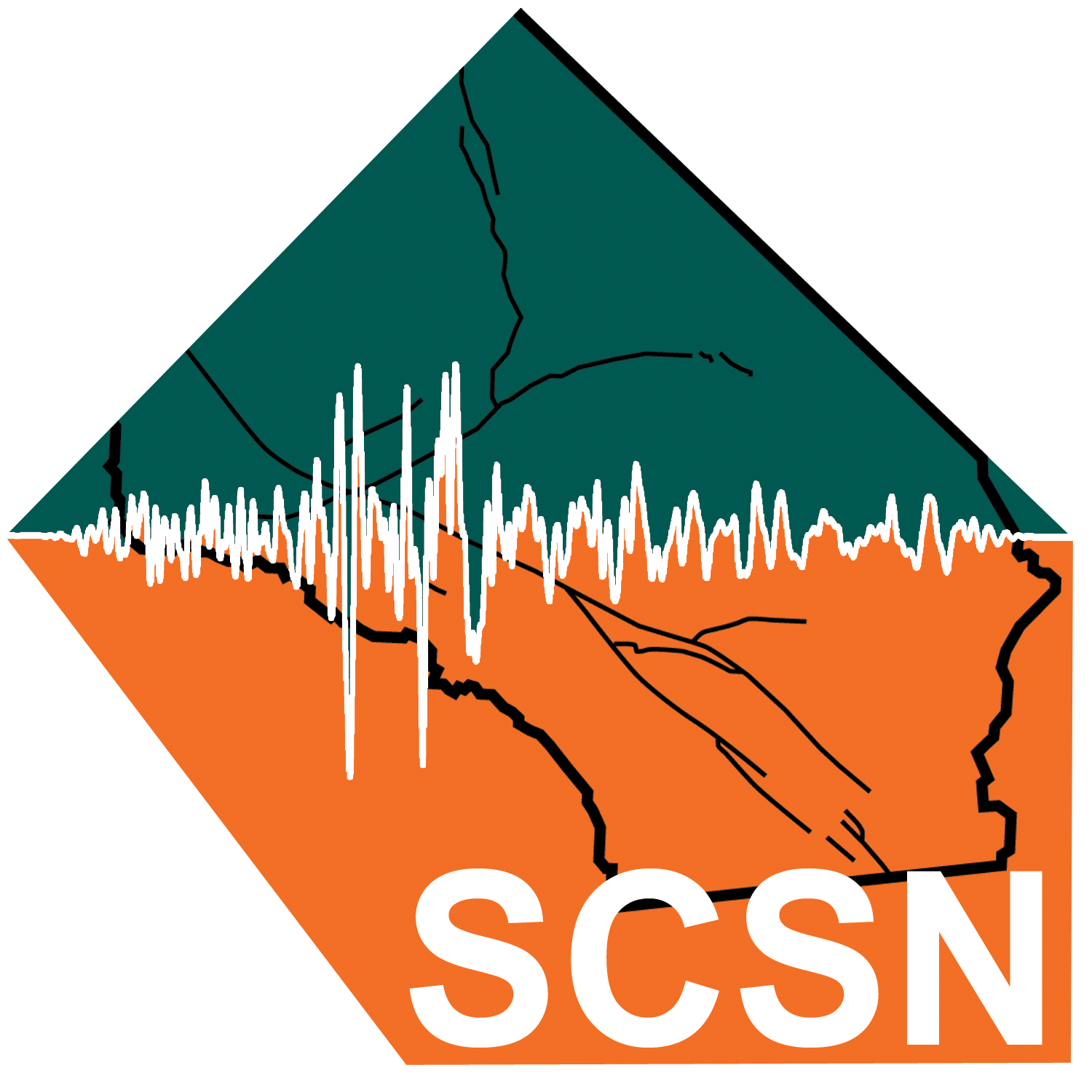Access Data
Waveform Data
Scanned Paper Seismograms 1963-1992
Making Sense of Drum Seismograms
Reading a drum seismogram is similar to reading a book: from left to right, top to bottom. Each horizontal line on the seismogram represents fifteen minutes of time, where the onset of each tick mark on the horizontal line represents each minute. Hour tick marks are larger than minute tick marks and appear every fourth horizontal line. Records also contain lines of WWVB time code, which are located horizontally in five places. The WWVB time code contains data encoded for the minute, hour, day, and year. On most records, WWVB time code is located at 1800 hours, 0000 hours, 0600 hours, 0700 hours, and 1200 hours. Two WWVB entries separated by one hour of time represent 0600 and 0700 hours, respectively.
A filename is written on each record, and is in the format:
CI.STA.BAND.COMP.YYYYMMDD.HHMM
Each portion of the filename represents important information about the record. From left to right, CI represents California Institute of Technology, STA represents the three letter station code (i.e. PAS = Pasadena), BAND represents the type of seismometer (see index below), COMP represents the direction component (see index below), YYYY represents the four digit year, MM represents the two digit month, DD represents the two digit day, and HHMM represents the time the record began recording, rounded to the closest whole hour (time is UTC, universal time).
To find the time of a particular event displayed on a WA record, locate the start time of the record, from the filename, then check the hour tick marks. If the hour tick mark at the top of the record appears within thirty minutes of the start of the record, then the hour tick mark is equal to the start time written at the end of the filename. If the hour tick mark appears more than thirty minutes from the start of the record, then the hour tick mark is equal to the start time plus one hour.
For some records, the time on the record may be wrong due to clock drift. One can figure this out by comparing the minute tick marks to the WWVB time, but it is usually written on the record in the form "+2.4" or "-1.2."
Also, many WA records will contain times written by hand, which may appear at the 1800, 0600, 0700, 1200, or 0000 hours. These hand written times help when attempting to find the time of an event in question. The time written by hand will usually be two integers, e.g., "12," "06," or "18."
Index of Stations (STA)
| PLM | PALOMAR | 33.35361 | -116.86265 |
| GSC | GOLDSTONE | 35.30177 | -116.80574 |
| PAS | PASADENA | 34.14844 | -118.17117 |
| BAR | BARRETT | 32.68005 | -116.67215 |
| CWC | COTTONWOOD CREEK | 36.43988 | -118.08016 |
| RVR | RIVERSIDE | 33.99351 | -117.37545 |
| SBC | SANTA BARBERA | 34.44076 | -119.71492 |
| TIN | TINEMAHA | 37.05422 | -118.23009 |
Index of Instruments (BAND)
| WA | Wood-Anderson Torsion Seismometer |
| LP | Long Period Press-Ewing Seismometer |
| 1-90 | Big Benioff 1-90 Seismometer |
Index of Component Directions (COMP)
| N | NORTH-SOUTH |
| E | EAST-WEST |
| NE | NORTH-SOUTH and EAST-WEST |
| Z | VERTICAL |



Credit: The SCEDC thanks Anthony Guarino, Caltech Seismic Analyst and Kate Hutton, Caltech Staff Seismologist for writing this guide and producing the images.






